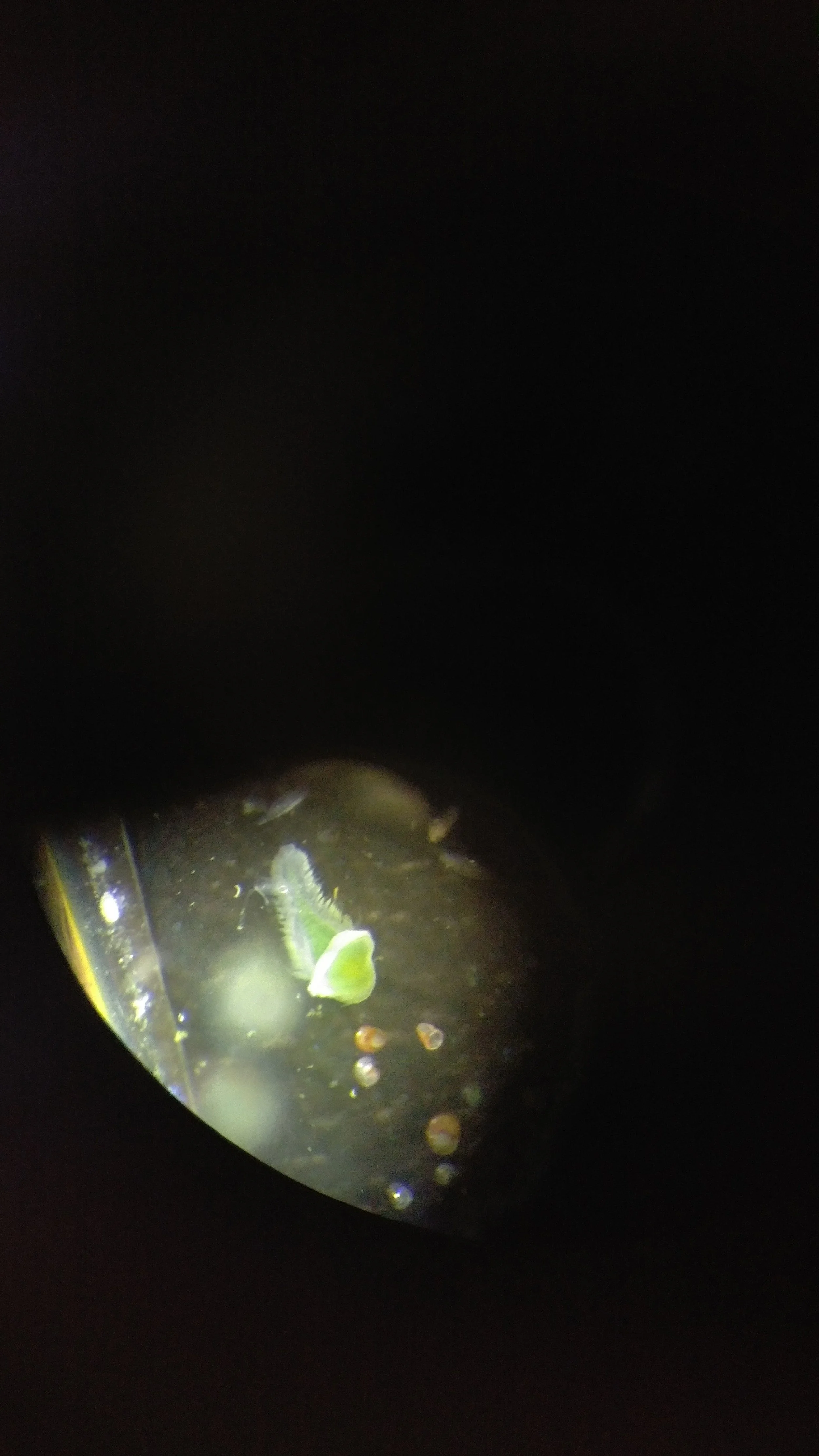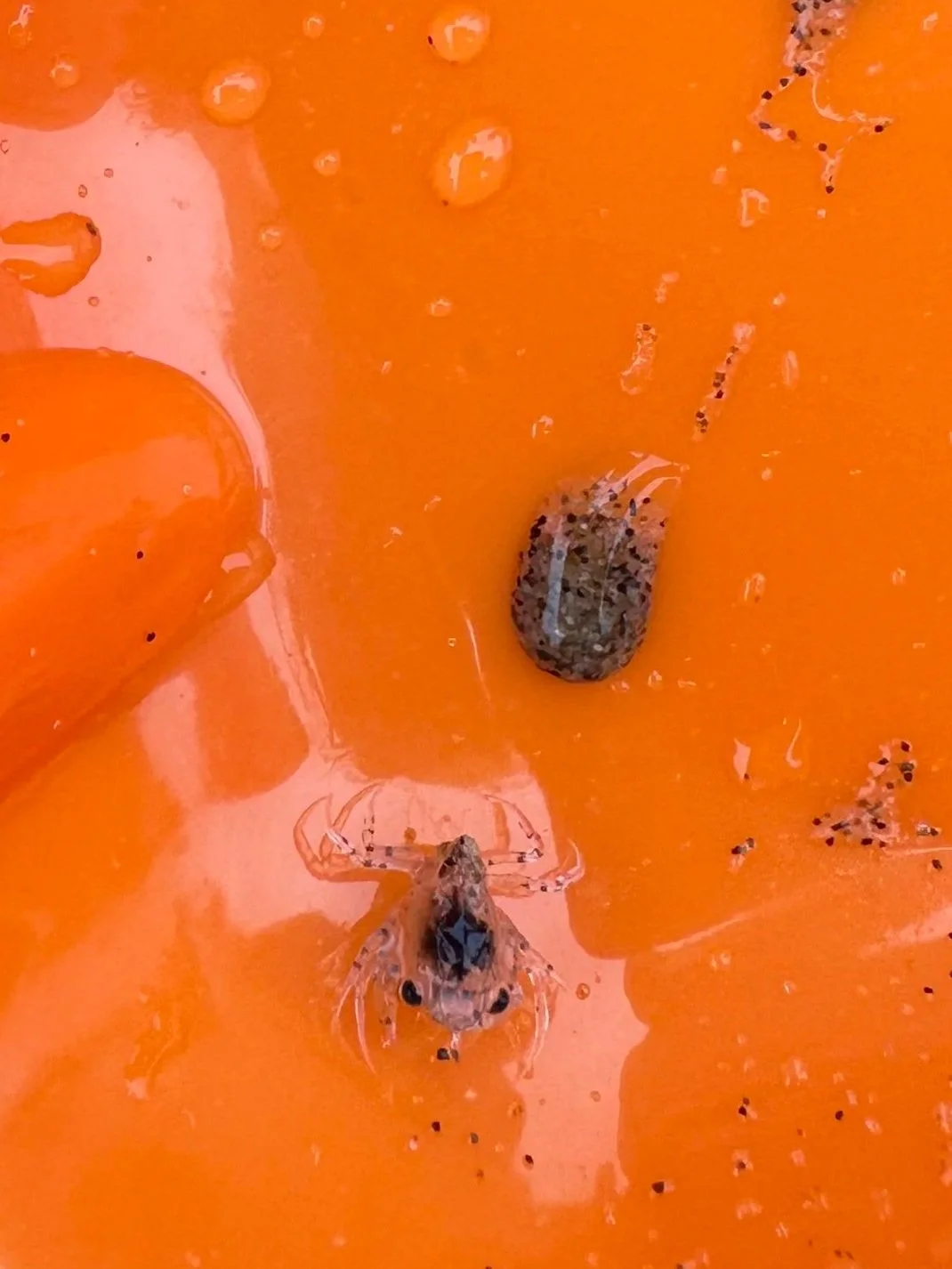Zooplankton
Planktonic (larval) segmented worm under a microscope (photo credit: Katie Corliss)
Pelagic worm in a beam of light underwater (photo credit: Katie Corliss)
Pelagic megalope (larval crab) in a visitors shovel (photo credit: Dani Nielsen)
Description: Zooplankton are planktonic animals. This includes animals that are microscopic for all or part of their lives and those that are too weak to fight the current, no matter their size. Those that are microscopic zooplankton their entire lives include critters like krill and pelagic worms. Those that are only planktonic part of their lives include larvae of invertebrates and some fish. The most common macroscopic animal that is considered a zooplankton would be jellyfish.
Habitat: As a common food source for many species of fish, zooplankton perform a vertical migration each day in order to survive. They live in the deeper, darker waters during the day to hide from predators and travel to surface waters at night to feed on phytoplankton.
Diet: Zooplankton are considered primary consumers, the first level of the food web, eating the primary producers - phytoplankton.
Tide Pool Tidbits:
The vertical migration performed each day by zooplankton is considered the largest migration on Earth! It’s so large, the migration can be visible from space.
Since zooplankton is such an important food source in the ocean, many other animals will follow the zooplankton migration in search of food.
References: NOAA, Woods Hole Oceanographic Institution




